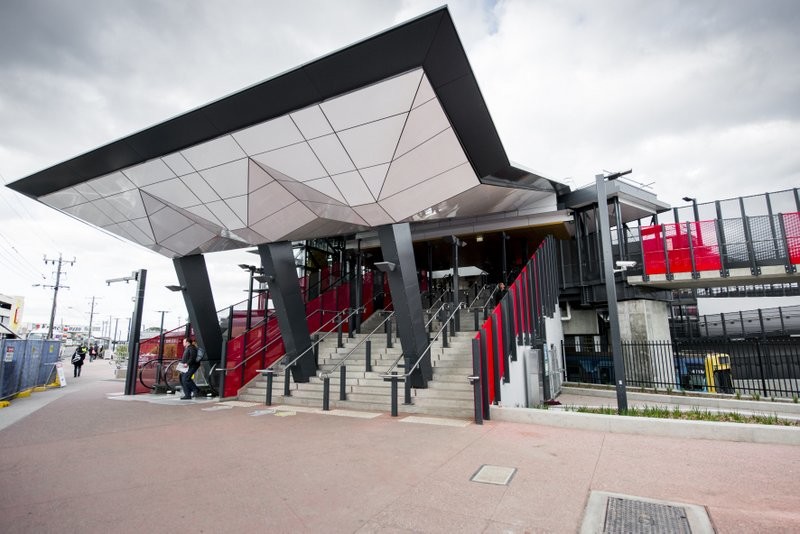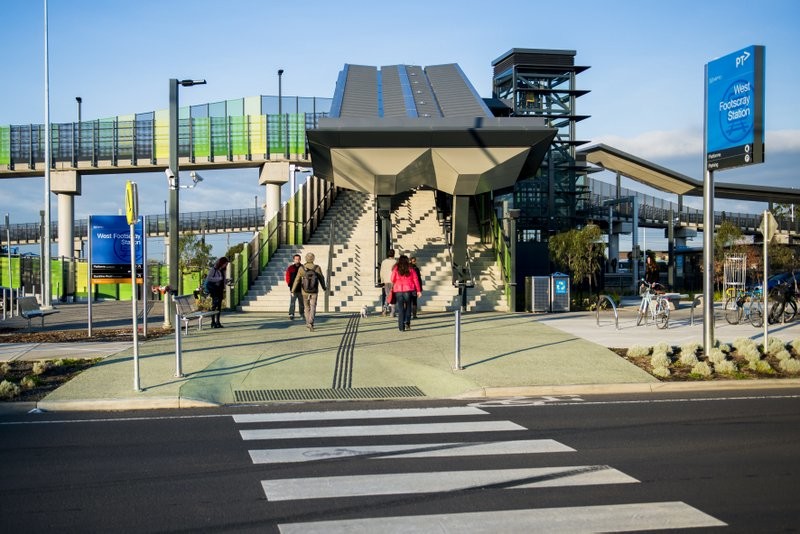Five Regional Rail Link stations in Victoria are the first of their kind to be awarded Green Star ratings from the Green Building Council Australia (GBCA).
The GBCA worked with the Regional Rail Link Authority to develop the new custom rating tool to guide the sustainable design and construction of railway stations.
As a result, the upgrades to Footscray, West Footscray and Sunshine railway stations and the new railway stations in Wyndham Vale and Tarneit have all received 4 Star Green Star – Custom Design certification from the GBCA.
GBCA’s Chief Executive, Romilly Madew said the stations are at the leading edge of sustainable design and that the people of Victoria now have proof that their community assets are efficient and future-proofed.
“The sustainable outcomes achieved through these five projects are truly impressive. West Footscray railway station, for example, produces 40 per cent less greenhouse gas emissions than a standard station design and consumes 60 per cent less water,” says Madew.

Footscray and West Footscray Stations have achieved 4 Star Green Star--Custom Designs. Images: Regional Rail Link Victoria.

Some of the sustainability features of the stations include:
-
Air conditioning and ventilation systems that reduce the entry of outdoor pollutants into indoor areas, and refrigerants in those systems that do not deplete the ozone layer
-
Extensive natural light to reduce reliance on electric lighting
-
More than 100 solar panels to provide power and heat water in the station
-
Energy efficient LED lighting in car parks, forecourts, uncovered patron areas, and many internal areas
-
Shading fins on the lift shafts to reduce the electricity used to cool them
-
Sensors that automatically switch off or reduce the use of lighting and air-conditioning systems when they are not required
-
Deliberate selection of paints, adhesives, plywoods and other materials that minimise the release of indoor air pollutants
-
Metering of water and electricity to track consumption so use can be actively managed
-
Prioritisation of walking routes over other modes of transport (such as cars, buses and trains) around the station
-
Integration of bike and shared-user paths, additional bike hoops and space for more bike storage in the future should demand increase
-
A rainwater harvesting system collects rainwater run-off from the roof which is used to flush station toilets and wash platforms
-
Water efficient taps, urinals and toilets
-
Low water-use and native plant species have been planted in the garden beds around the station
-
Timber and composite timber products (such as plywood and MDF) sourced from sustainable forestry or second-hand suppliers
-
Steel sourced from steel makers that are members of the World Steel Association's Climate Action Programme and have appropriate environmental management systems in place
-
Fabricated structural steelwork sourced from contractors accredited to the Environmental Sustainability Charter of the Australian Steel Institute
-
Flooring, joinery and loose furniture designed to have a reduced environmental impact.

